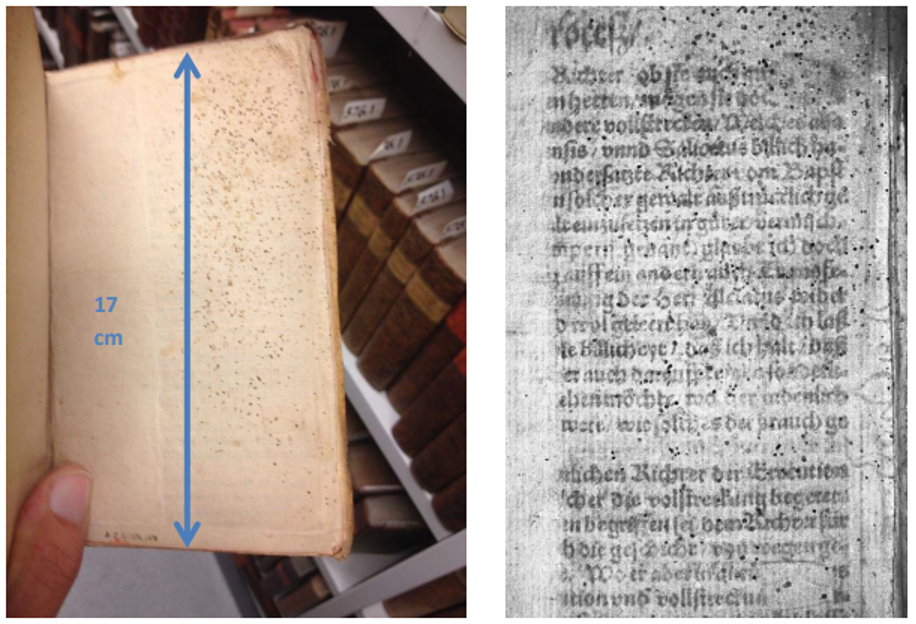Spring 1969. A special delivery comes to Odense from Naevsted, a town of medieval origins southeast of Zealand. 40000 books formerly in the possession of Herlusfholm, a four-century old boarding school, are unloaded at the newly founded Syddansk Universitet, which had just welcomed the first students two years before. A treasure trove, which would become a substantial part of SDU special collections, including hundreds of 16th and 17th-century books as well as 15 incunabula. Fast forward half a century or so, research librarians Jakob Povl Holck and Mogens Kragsig Jensen realize that the collection is a gift that has still something to give. When print came to be, manuscripts became obsolete and were recycled by cutting down parchment into strips to create bindings for the new medium. In fact, one out of five book bindings from the 16th and 17th c. hides fragments of older medieval manuscripts, according to estimates. If so, what were the books from Herlufsholm concealing behind their age-old covers? And how to access whatever was pressed in the bindings without damaging the books?
Jakob and Mogens teamed up with optical engineer René Lynge Eriksen and came up with a clever solution. It was known that multi- and hyperspectral (MSI and HSI) imaging allowed to capture images with several hundreds of spectral bands (in very narrow spectral bands, a few nm) both in the visible and the Near Infrared Range (NIR: 400 nm up to 1700 nm) and with megapixel spatial resolution. Light penetrates paper and parchment much more easily in the NIR region compared with traditional RGB color imaging. The traditional color imaging – which captures an image in three spectral bands, red (R), green (G) and blue(B), – does not allow to capture detailed spectral information within one specific color band, and therefore makes spectral identification troublesome. Furthermore, it does not identify specific spectral fingerprints in the near infra-red (NIR). On the contrary, hidden texts in book bindings can be partially revealed using this technology (HSI). Moreover, the scanners make it also possible to identify specific ink pigments used in the old books, which allows to historically trace manuscript corrections.
So far, so good. It was the ideal solution to uncover the fragments hidden in the early print in a non-invasive way. But how to solve the logistics? Fortune favors the brave. René reached out to a private company, Newtec Engineering, whose area of activity is as far removed from books as one could imagine – food weighting, packaging and sorting. The company offered a one-off pro-bono collaboration to do a first sampling on the Herlufsholm collection in 2017. Results were spectacular. A small group of 14 volumes were analyzed using HIS at different wavelengths (420-960 nanometer, with an interval of 2,5 nm) and a spectrograph from Specim (ImSpector V10E) as optics. ca 100 fragments were located, enriching our knowledge of medieval and early modern Danish book culture. Three years later, the small team joined forces with colleagues at the Faculty of Humanities, Christian Høgel and Aglae Pizzone and put forward a bid with the Carlsberg foundation, which generously funded what is now the set-up AntCom students will work with to unlock the full potential of SDU special collections.
Doctoral candidates will work with cutting-edge Hyperspectral Imaging (HSI) technology to acquire two-dimensional spectral images of the different manuscripts, books, and palimpsests, and more. Yes, because a successful analysis and extraction of important information in the HSI data also requires efficient computational data analysis based on multivariate techniques. One of the expected outcomes of the PhD Research Project is therefore to develop a HSI analysis and visualization frame which can be used by non-physics/math trained persons to form easily interpretable images with a high contrast, focusing on the specific detail in a manuscript, and consequently significantly improve readability, compared with traditional RGB color imaging. The future is here and now… it is the right time to join in.
Have a look at Jakob Povl Holck and Mogens Kragsig Jensen works to see what has already been done. And here you can dive deep into the mystery of poisonous books at SDU’s Special Collection.

